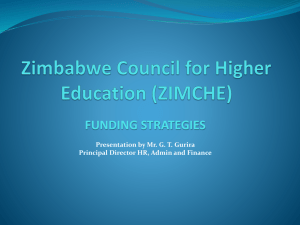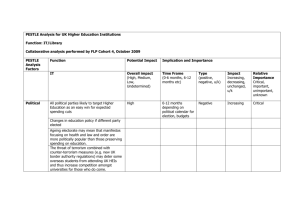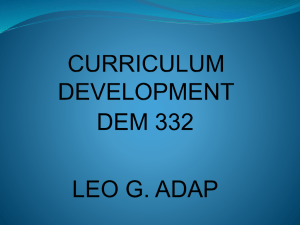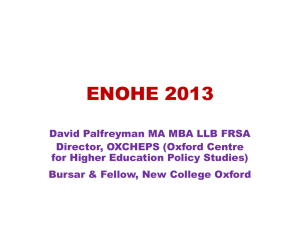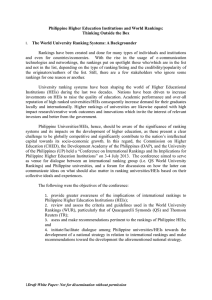Structure of the Russian Higher Education System: Types of Russian
advertisement
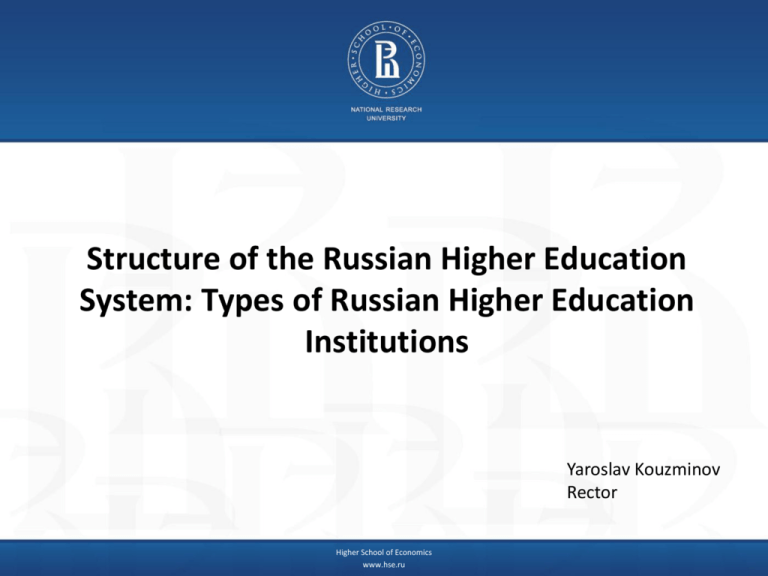
Structure of the Russian Higher Education System: Types of Russian Higher Education Institutions Yaroslav Kouzminov Rector Higher School of Economics www.hse.ru Key Impact Factors on the Structure of the Russian Education System (1990s-2010s) 1. 2. 3. 4. 5. 6. 7. 8. 9. Demographic changes and trends Higher education massification and increasing access Emergence of the private sector (private HEIs, tuition places in state HEIs) Appearance of new stakeholders (citizens, employers, etc.) having interests of their own Emergence of new economic sectors (new labor markets) and decline of a number of sectors Changing status of the academic profession Changing “rules of the game”: appearance of new mechanisms and redistribution of student flows in education (USE exam) and abandonment of old mechanisms (mandatory job placement for graduates) Public structural reforms in higher education International agenda of education reform and globalization Structure of the Russian Education System: Types of Higher Education Institutions HEI Types % of Russian national admissions Research universities 14% Infrastructural HEIs 24% Specialized industrial HEIs 13% Mass HEIs 43% - including regional branches 13% Private HEIs 6% -Specialized -Mass Indicators: research productivity and intensiveness; level of competitiveness (in particular, on regional education markets); level and quality of HEI internal diversification (specialization); (in particular, for specialized industrial HEIs); ability to attract talents. Data: Federal State Statistics Service (Rosstat), Monitoring Study of Admissions Quality (HSE, 2009-2014), HEIs Effectiveness Monitoring (2012-2014). Sample: 426 state and 491 private HEIs , 1482 regional branches 5:100 Universities in Russian Higher Education Indicators 5:100 universities Average score of Unified State Examination 74,9 R&D per faculty member, th.₽ Leading universities Public HEIs All HEIs 69,1 63,5 58,3 831,2 660,7 346,8 276,7 Share of foreign students, % 6,9 4,7 4,3 4,7 Share of master students 13,7 12,1 4,9 4,3 Citations in Web of Science per 100 faculty members 340,0 173,8 50,2 37,6 Number of publications Web of Science per 100 faculty members 30,8 17,7 5,0 4,1 Number of journals being published 9,2 8,4 3,4 2,5 (National research univeristies & Federal universities) HEI Types Lacking in Russian Higher Education Current situation Global research universities 15 HEIs of the 5-100 Program (2020) striving to enter global rankings Internationally oriented HEIs in the humanities and social sciences Target situation for assuring “healthy” system diversity 50 global universities 10-15 HEIs RSHU Liberal arts universities Specialized private HEIs with an engineering or medical nucleus Small master’s research universities Smolny Institute 10-15 HEIs 15-20 HEIs Russian New University, Dubna University New Economic School, European University in Saint-Petersburg 15-20 universities Characteristics of the Flagship University Model Flagship University • Active positioning in HE system • Works on a specific territory (country, macroregion or region) • Selective student admissions National HE System Mission: Education and Research Social Function Governance and Accountability • • • • • • • • • Bachelor’s programs Master’s programs Graduate programs Research Involvement in international networks • Involvement in national and regional development • Technology transfer • Continuing education • Work with schools Institutional autonomy Multilevel governance system Academic freedom Quality assurance
